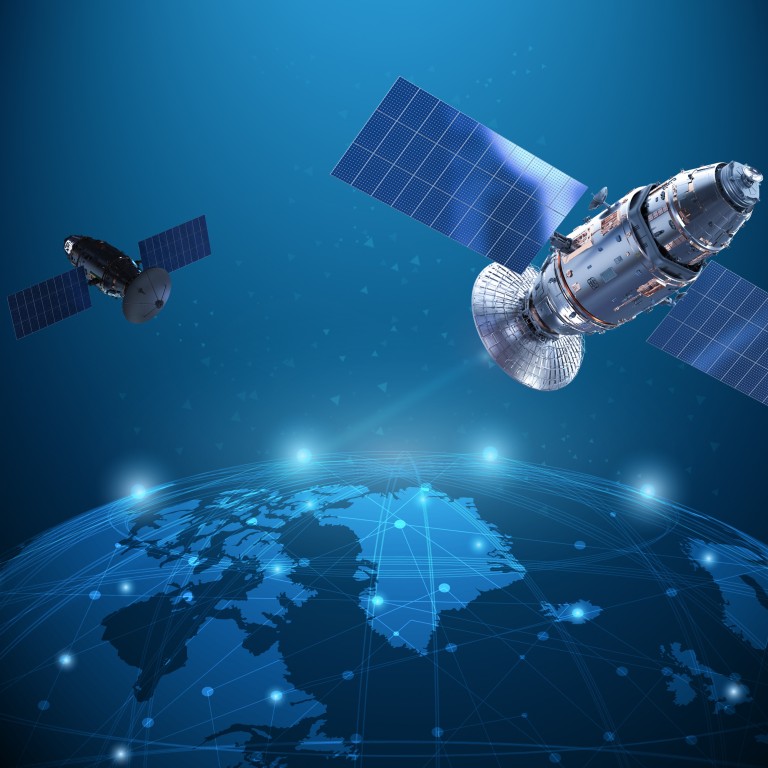
China scientists carry out ‘rule-breaking’ AI experiment in space
- Researchers from Wuhan University say they gave the technology full control of a satellite and set it free for 24 hours
- The artificial intelligence machine picked a few places and ordered the small near-Earth orbiter to take a closer look
For 24 hours the Qimingxing 1, a small Earth observation satellite, was directed by a ground-based AI, without any human order, assignment or intervention, according to a paper published in the journal Geomatics and Information Science of Wuhan University.
The research team, led by Wang Mi from the university’s State Key Laboratory of Information Engineering in Surveying, Mapping and Remote Sensing, said the aim of the experiment was to see what the AI would do of its own accord.
The scientists said the AI picked a few places on Earth and ordered the Qimingxing 1 to take a closer look. No explanation was given for why the technology may have selected the locations.
Osaka, one of Japan’s busiest ports which occasionally hosts US Navy vessels operating in the Pacific, also ranked highly in the AI’s list of interests.
China to launch nearly 13,000 satellites to ‘suppress’ Starlink: researchers
“This approach breaks the existing rules in mission planning,” said Wang and his colleagues in their paper published on April 3.
Until now, most satellites have needed specific orders or assignments before taking action. An assignment can be prompted by unexpected events – such as war or an earthquake – or a satellite can be scheduled to make long-term observations of particular targets.
While AI technology has been increasingly used in space missions – including for image recognition, drawing flight paths and collision avoidance – it has not been given control of a satellite, resulting in a waste of time and resources, according to the team.
“The satellites are expensive with a limited lifespan. It is urgent to make the most out of their value with new orbital applications,” the researchers said.
The team suggested that an AI-controlled satellite could alert select users – including the military, national security administration and other relevant agencies – if it detected unusual objects or activity.
But to make good decisions, the AI needs a full understanding of the planet – so it cannot only identify artificial and natural objects, but also learn the complex and constantly evolving relationships between them and the many different human societies, the scientists said.
China to require security assessment for AI tools similar to ChatGPT
Wang’s team built an enormous text library of data from around the globe, similar to the corpus used to train language models such as ChatGPT. The AI developed by the researchers cannot chat – but it can take initiative based on its training and growing understanding of natural and human activities.
The researchers said the AI’s decision-making process was extremely complex. The machine needs to consider many factors – such as real-time cloud conditions, camera angles, target value and the limits of a satellite’s mobility – when planning a day’s work.
The calculation could be so sophisticated that traditional computer models for space mission management might not be able to solve the problem within a reasonable time, they said.
The US and Chinese militaries have also proposed adding surveillance and other instruments that would allow these small orbiters to do more than just provide internet services.
The thousands of satellites in their giant constellations will pose a severe challenge to most space agencies. Some scientists have argued that only AI will be able to manage them without causing a cascade of collisions.
Why Starlink and China’s internet satellite groups need to talk to each other
China’s space scientists pioneered the application of AI technology in orbit in 2021, using a small smart satellite in 2021 to detect and monitor an unpublicised US naval exercise off the coast of New York.
Without the ground support usually required for surveillance missions, the satellite identified an aircraft carrier and other warships and sent back sharp images that allowed the Chinese military to monitor the exercise in almost real time.
A Shanghai-based space scientist who was not involved in the research said he was not concerned at the prospect of giving AI more control over satellites.
“I believe Beijing flight control will keep a close watch on everything. If the AI tries anything funny it will be cut off by the human operator immediately,” said the researcher, who asked not to be named because of the issue’s sensitivity.
But another space scientist in Beijing, with experience of ChatGPT, said he was worried about what could happen if a large language model gained access to flight control and learned how to operate a satellite.
“Satellites are our eyes and ears in the sky. Do we really want the AI to decide what we see and hear?” he said, also on condition of anonymity.
When asked what it would do if it were a satellite operator on a quiet day with no assignment, ChatGPT said it would conduct maintenance checks, update software and firmware, perform calibration and testing, and “explore new areas of interest”.
The chatbot, developed by Microsoft-backed OpenAI, went on to name some locations that interested it most, including Australia’s Great Barrier Reef, the Amazon rainforest and the Himalayas, as well as the Sahara Desert and the Antarctic Peninsula.
When asked why it had picked these areas, ChatGPT said it was because they are “being affected by human activity and climate change”.

